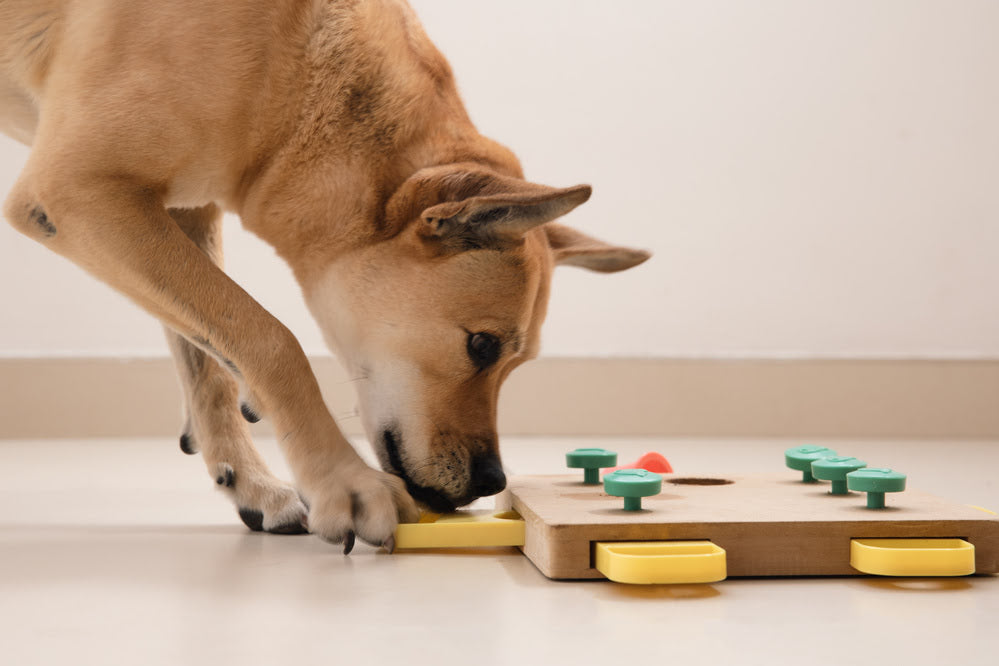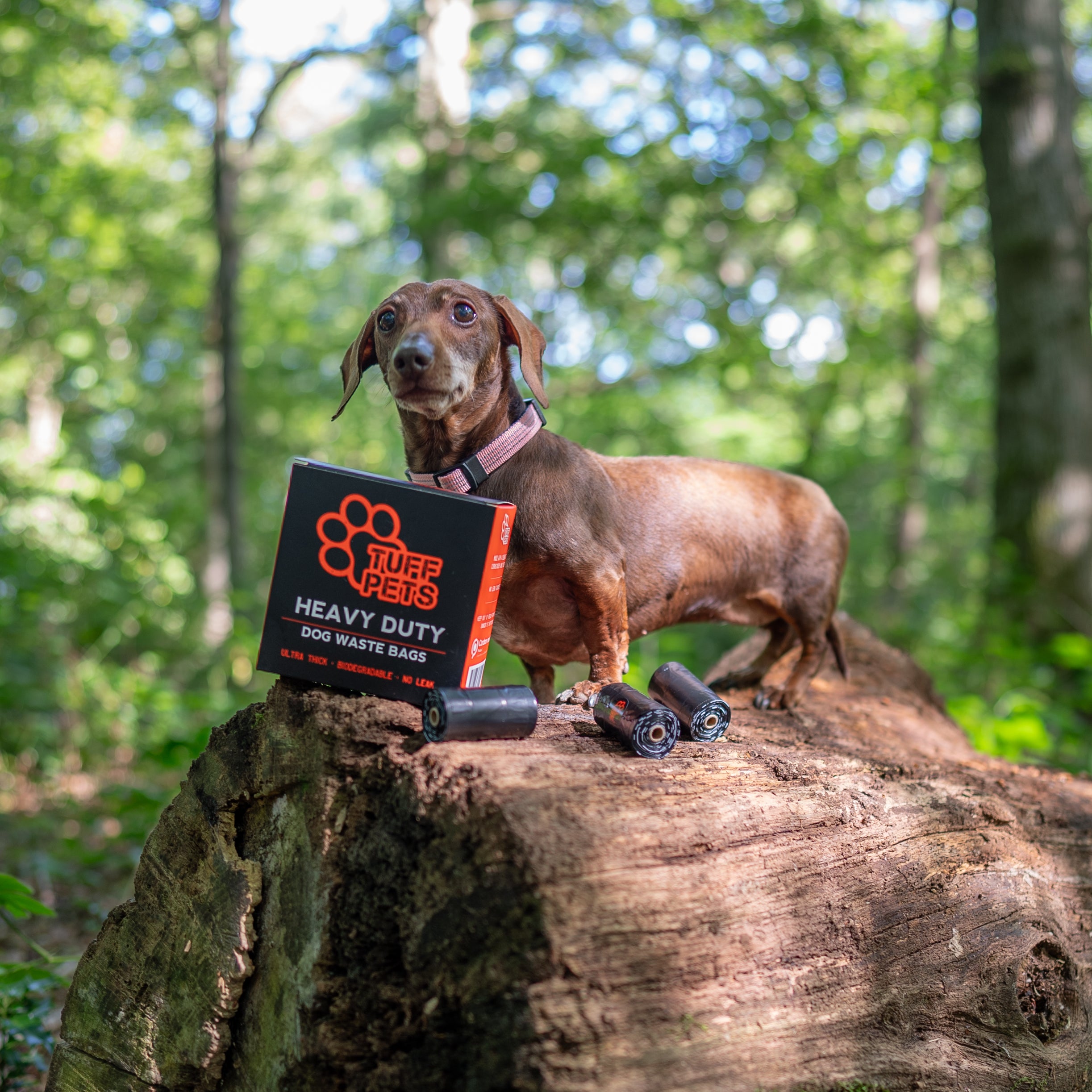When you welcome a dog into your family, frequent walks become an absolutely essential part of daily life. For adult dogs, these walks may be more leisurely than those for younger dogs, but keeping up this regime is beneficial for both of you.
The fresh air, exercise and opportunity to bond with your dog are all incredibly valuable benefits that come with dog walks, so taking time out to make sure they get the best start in life is a worthwhile investment.
Getting into a regular outdoor adventures helps ensure you and your four legged friends have a great relationship right from the start.
When Is It Safe to Start Walking a Puppy?

Walking a puppy is an important part of their development, but how much exercise should you give them and when is it safe to start?
Generally, it is best to wait until your pup has completed its first round of vaccinations before taking him outside. Breeds with more energy such as Border Collies can handle longer walks at a younger age but be sure to keep the walk shorter than usual and avoid contact with other dogs.
Additionally, do not over-exercise as this can affect your puppy's health. The amount of exercise depends on how old your puppy is, how active he or she is by nature, the climate and how far you are walking. If in doubt, consult your veterinarian for advice on how much exercise is right for your pup.
You can also focus on obedience training and mental stimulation as a way of tiring your pup if you're afraid of over-exercising them.
Walking is good for your dog's health (and yours, too)
Walking your dog provides numerous health benefits for both you and your pup. For older dogs, a walk can provide important forms of exercise and stimulation, not only keeping them active but aiding in weight control, ensuring they receive enough exercise, helping to lower blood pressure, promote good joint health & keep any health conditions at bay.
Many physical issues are kept at bay in senior pooches with regular walk times. And, of course, there's the added benefit of being able to take in fresh air and uncover sights, smells, new learning environments... plus the chance to make new friends in other dogs.
When it comes to looking after one's canine friend, walk time is an essential routine that should never be neglected when considering your dog's overall health and well-being.
Which dog breeds only require a short daily walk?
For those looking for a canine companion that doesn’t require hours of walking each day, there are several low-maintenance dog breeds that can make great pets. Dogs such as pugs, bulldogs, and Shih Tzus are all breeds that can walk well with only moderate amounts of physical activity.
Though it’s important to walk your dog every day for their health, very short walks - between ten minutes and a half hour - can be enough depending on the breed. Seeing as these breeds also don’t need tons of running or playing, they tend to enjoy shorter walks anyway.
For anyone looking for a less active pet or simply wanting something to add routine to their own daily walk, these lower maintenance pooches could be perfect companions!
Activity level needs by dog breed groups
It is important to note that breed plays a major role in determining the types of activity level needs for many dogs. As a general rule, most breed groups need at least one or two short walks daily, as well as other forms of physical and mental exercise.
Smaller dogs tend to require fewer long walks, but are known for their higher energy levels which need to be satisfied through games and activities like fetch. Toys that encourage movement such as puzzles can also help depending on breed.
Active breed groups such as sporting and herding breed require more of an investment in daily activity; they are better suited for those who can make time for multiple long walks and have access to places where canine athletes can soar!
As a general rule of thumb, it is important to remember that all breeds require plenty of mental stimulation regardless of how much physical exercise they need!
How Good Is Walking as Exercise?

Walking is a great form of exercise and an excellent way to get in some extra physical activity into your daily routine. Owning a new dog can be especially beneficial in this regard, especially if it is a high energy breed that needs lots of exercise.
Setting some time aside each day to ‘walk your dog’ not only gives them the opportunity to expend their energy, but also means you can enjoy the great outdoors while exercising too.
The benefits include many positive effects on both mind and body, such as reducing stress levels, improved joint health, increased endurance and strength, and weight loss. Being sure to take regular ‘dog walks’ with your new dog is a fantastic way to make sure both you and your pet stay healthy and happy for years to come.
Activity needs of sheepdogs and cattle dogs
Herding dog breeds such as sheepdogs and cattle dogs require lots of activity to stay healthy and in good spirits. These are very high energy dog breeds, so a traditional daily exercise dog walk isn't usually enough to keep them busy.
An ideal exercise regimen for these dogs is several dog walks throughout the day coupled with other stimulating activities like running, fetching, and regular training sessions. This way your dog can release their extra energy while bonding with you and learning new skills.
Setting up a regular exercise routine that integrates quality dog walks into it will ensure your dog receives the physical and mental stimulation they need while also helping maintain their health long-term.
What about Senior Dogs?
Senior dogs require special care and attention to ensure they are living their happiest and healthiest lives.
It is recommended that dog owners consider shorter dog walks in place of their dog's longer ones if they notice any signs of fatigue, stiffness or pain. This may mean modifying the dog walk to a slower pace or with frequent breaks for rest.
Reducing walks altogether is also beneficial to a dog’s health and low impact activities should be considered; such as light playtime or gentle massages. Pet owners should make sure to check with their vet on the best plan for their dog's lifestyle as older age often brings on mobility issues that need to be managed appropriately.
How much activity do companion dogs really need?
When it comes to companion dogs, one of the most important questions owners often struggle with is how much activity do they really need? The answer depends on many factors, with age often playing a big role. Generally speaking, a young dog will often require more exercise than an adult one.
When possible, owners should aim to provide their pooches with at least two walks of 20 minutes each day as well as multiple potty breaks throughout the day. That being said, not all dogs can handle such vigorous activity everyday so owners should take their dog's medical history and personality into consideration when deciding how often and for how long they should take their furry friends out for a walk.
What kind of sports can I do with my dog?

Exercise is an important part of any living creature's life, and this includes dogs. If you want to spend time exercising with them, there are many sports that you can do with your dog that will get you both in good shape.
Dog sports can range from agility training and flyball races to frisbee or dock diving. Some require special equipment or access to certain venues, but the goal is always the same - to have time with your dog while keeping him in tip-top health.
Depending on your budget and time availability, there is a sport that is perfect for both of you, as well as compatible with any health issues either one may have. However you decide to exercise together, it will be time fun time spent!
FAQs
1. How often should I walk my dog? Should I walk my dog today?
Only the owner can know how often they need to walk their dog. At the very least, all dogs need one walk per day to remain healthy.
2. What are the benefits of walking my dog? Why do dogs need walks?
Walking your dog not only benefits your canine companion's physical health, but also its mental wellbeing. Regular exercise can help stave off obesity and reduce the risk of various medical conditions such as heart problems, joint pain, and digestive issues.
3. How do I know if I'm walking my dog too much or too little?
To help understand what's best for your pet, it's important to pay attention to their energy and behaviour.
Regular walks can often help keep their energy in check, but if your pup is prone to panting and fatigue during or after long walks, then they may need shorter or fewer walks throughout the week.
Similarly, if your dog is always bursting with energy despite being walked, they may need more than one walk or some other form of energy sapping play.
4. What are some other things I can do to make sure my dog gets enough exercise?
There are many other activities you can do with your pup to help keep them active and healthy. Playing a game of fetch or tug-of-war can give your pup an enjoyable way to exercise, while swim sessions boost cardiovascular health and reduce joint pain.
If you're feeling low energy, you can even put together an agility course in your own living room that creates a fun but challenging environment for your furry friend.
Getting creative has its perks; it's important to make sure your pup is having a good time while getting enough exercise.
5. Have I over exercised my dog?
Over-exercising your dog can lead to fatigue, dehydration, and even serious injuries.
Signs of over-exercising in dogs includes excessive panting, refusal to exercise, muscle stiffness, and exhaustion.
If you suspect that you may have over-exercised your dog, it's important to give them a break and consult with a veterinarian to develop a safe and appropriate exercise routine.


















Share:
Why Do Dogs Spin In Circles?
Why Do Dogs Roll On Their Backs? For Fun? Or Something Else?